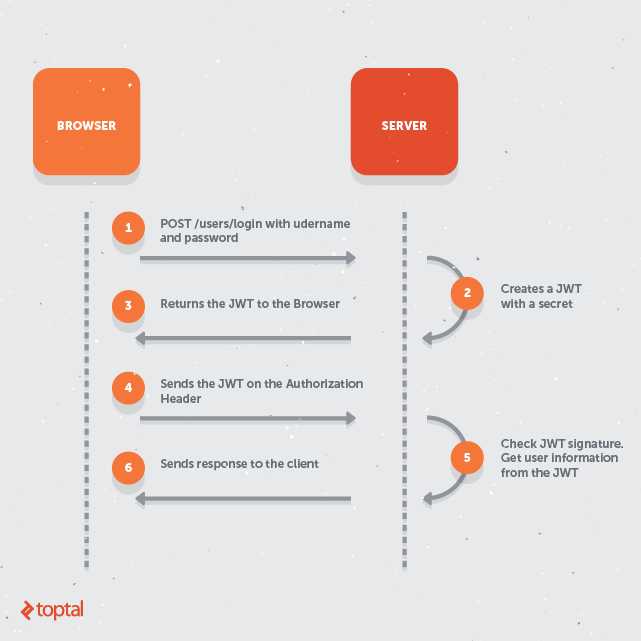标签:div websites website generated client requests device mount requested
Security is the enemy of convenience, and vice versa. This statement is true for any system, virtual or real, from the physical house entrance to web banking platforms. Engineers are constantly trying to find the right balance for the given use case, leaning to one side or the other. Usually, when a new threat appears, we move towards security and away from convenience. Then, we see if we can recover some lost convenience without reducing the security too much. Moreover, this vicious circle goes on forever.

Security is the enemy of convenience, and vice versa.
Let’s try to see where REST services currently stand regarding security and convenience. REST (which stands for Representational State Transfer) services started off as an extremely simplified approach to Web Services that had huge specifications and cumbersome formats, such as WSDL for describing the service, or SOAP for specifying the message format. In REST, we have none of those. We can describe the REST service in a plain text file and use any message format we want, such as JSON, XML or even plain text again. The simplified approach was applied to the security of REST services as well; no defined standard imposes a particular way to authenticate users.
Although REST services do not have much specified, an important one is the lack of state. It means the server does not keep any client state, with sessions as a good example. Thus, the server replies to each request as if it was the first the client has made. However, even now, many implementations still use cookie based authentication, which is inherited from standard website architectural design. The stateless approach of REST makes session cookies inappropriate from the security standpoint, but nevertheless, they are still widely used. Besides ignoring the required statelessness, simplified approach came as an expected security trade-off. Compared to the WS-Security standard used for Web Services, it is much easier to create and consume REST services, hence convenience went through the roof. The trade-off is pretty slim security; session hijacking and cross-site request forgery (XSRF) are the most common security issues.
In trying to get rid of client sessions from the server, some other methods have been used occasionally, such as Basic or Digest HTTP authentication. Both use an Authorization header to transmit user credentials, with some encoding (HTTP Basic) or encryption (HTTP Digest) added. Of course, they carried the same flaws found in websites: HTTP Basic had to be used over HTTPS since username and password are sent in easily reversible base64 encoding, and HTTP Digest forced the use of obsolete MD5 hashing that is proven to be insecure.
Finally, some implementations used arbitrary tokens to authenticate clients. This option seems to be the best we have, for now. If implemented properly, it fixes all the security problems of HTTP Basic, HTTP Digest or session cookies, it is simple to use, and it follows the stateless pattern.
However, with such arbitrary tokens, there’s little standard involved. Every service provider had his or her idea of what to put in the token, and how to encode or encrypt it. Consuming services from different providers required additional setup time, just to adapt to the specific token format used. The other methods, on the other hand (session cookie, HTTP Basic and HTTP Digest) are well known to developers, and almost all browsers on all devices work with them out of the box. Frameworks and languages are ready for these methods, having built-in functions to deal with each seamlessly.
JWT (shortened from JSON Web Token) is the missing standardization for using tokens to authenticate on the web in general, not only for REST services. Currently, it is in draft status as RFC 7519. It is robust and can carry a lot of information, but is still simple to use even though its size is relatively small. Like any other token, JWT can be used to pass the identity of authenticated users between an identity provider and a service provider (which are not necessarily the same systems). It can also carry all the user’s claim, such as authorization data, so the service provider does not need to go into the database or external systems to verify user roles and permissions for each request; that data is extracted from the token.
Here is how JWT is designed to work:

Authorization header and decrypts it, if needed, validates the signature, and if everything is OK, extracts the user data and permissions. Based on this data solely, and again without looking up further details in the database or contacting the identity provider, it can accept or deny the client request. The only requirement is that the identity and service providers have an agreement on encryption so that service can verify the signature or even decrypt which identity was encrypted.This flow allows for great flexibility while still keeping things secure and easy to develop. By using this approach, it is easy to add new server nodes to the service provider cluster, initializing them with only the ability to verify the signature and decrypt the tokens by providing them a shared secret key. No session replication, database synchronization or inter-node communication is required. REST in its full glory.
The main difference between JWT and other arbitrary tokens is the standardization of the token’s content. Another recommended approach is to send the JWT token in the Authorization header using the Bearer scheme. The content of the header should look like this:
Authorization: Bearer <token>
For REST services to work as expected, we need a slightly different authorization approach compared to classic, multi-page websites.
Instead of triggering the authentication process by redirecting to a login page when a client requests a secured resource, the REST server authenticates all requests using the data available in the request itself, the JWT token in this case. If such an authentication fails, redirection makes no sense. The REST API simply sends an HTTP code 401 (Unauthorized) response and clients should know what to do; for example, a browser will show a dynamic div to allow the user to supply the username and password.
On the other hand, after a successful authentication in classic, multi-page websites, the user is redirected by using HTTP code 301 (Moved permanently), usually to a home page or, even better, to the page the user initially requested that triggered the authentication process. With REST, again this makes no sense. Instead we would simply continue with the execution of the request as if the resource was not secured at all, return HTTP code 200 (OK) and expected response body.

Now, let’s see how can we implement the JWT token based REST API using Java and Spring, while trying to reuse the Spring security default behavior where we can. As expected, Spring Security framework comes with many ready to plug-in classes that deal with “old” authorization mechanisms: session cookies, HTTP Basic, and HTTP Digest. However, it lacks the native support for JWT, and we need to get our hands dirty to make it work.
First, we start with the usual Spring Security filter definition in web.xml:
<filter> <filter-name>springSecurityFilterChain</filter-name> <filter-class>org.springframework.web.filter.DelegatingFilterProxy</filter-class> </filter> <filter-mapping> <filter-name>springSecurityFilterChain</filter-name> <url-pattern>/*</url-pattern> </filter-mapping>
Note that the name of the filter must be exactly springSecurityFilterChain for the rest of the Spring config to work out of the box.
Next comes the XML declaration of the Spring beans related to security. In order to simplify the XML, we will set the default namespace to security by adding xmlns="http://www.springframework.org/schema/security" to the root XML element. The rest of the XML looks like this:
<global-method-security pre-post-annotations="enabled" /> (1) <http pattern="/api/login" security="none"/> (2) <http pattern="/api/signup" security="none"/> <http pattern="/api/**" entry-point-ref="restAuthenticationEntryPoint" create-session="stateless"> (3) <csrf disabled="true"/> (4) <custom-filter before="FORM_LOGIN_FILTER" ref="jwtAuthenticationFilter"/> (5) </http> <beans:bean id="jwtAuthenticationFilter" class="com.toptal.travelplanner.security.JwtAuthenticationFilter"> (6) <beans:property name="authenticationManager" ref="authenticationManager" /> <beans:property name="authenticationSuccessHandler" ref="jwtAuthenticationSuccessHandler" /> (7) </beans:bean> <authentication-manager alias="authenticationManager"> <authentication-provi
@PreFilter, @PreAuthorize, @PostFilter, @PostAuthorize annotations on any spring beans in the context.stateless (we do not want the session created for security purposes as we are using tokens for each request).csrf protection because our tokens are immune to it.AbstractAuthenticationProcessingFilter, we need to declare it in XML to wire its properties (auto wire does not work here). We will explain later what the filter does.AbstractAuthenticationProcessingFilter is not good enough for REST purposes because it redirects the user to a success page; that is why we set our own here.authenticationManager is used by our filter to authenticate users.Now let’s see how we implement the specific classes declared in the XML above. Note that Spring will wire them for us. We start with the simplest ones.
public class RestAuthenticationEntryPoint implements AuthenticationEntryPoint {
@Override
public void commence(HttpServletRequest request, HttpServletResponse response, AuthenticationException authException) throws IOException {
// This is invoked when user tries to access a secured REST resource without supplying any credentials
// We should just send a 401 Unauthorized response because there is no ‘login page‘ to redirect to
response.sendError(HttpServletResponse.SC_UNAUTHORIZED, "Unauthorized");
}
}
As explained above, this class just returns HTTP code 401 (Unauthorized) when authentication fails, overriding default Spring’s redirecting.
public class JwtAuthenticationSuccessHandler implements AuthenticationSuccessHandler {
@Override
public void onAuthenticationSuccess(HttpServletRequest request, HttpServletResponse response, Authentication authentication) {
// We do not need to do anything extra on REST authentication success, because there is no page to redirect to
}
}
This simple override removes the default behavior of a successful authentication (redirecting to home or any other page the user requested). If you are wondering why we do not need to override the AuthenticationFailureHandler, it is because default implementation will not redirect anywhere if its redirect URL is not set, so we just avoid setting the URL, which is good enough.
public class JwtAuthenticationFilter extends AbstractAuthenticationProcessingFilter {
public JwtAuthenticationFilter() {
super("/**");
}
@Override
protected boolean requiresAuthentication(HttpServletRequest request, HttpServletResponse response) {
return true;
}
@Override
public Authentication attemptAuthentication(HttpServletRequest request, HttpServletResponse response) throws AuthenticationException {
String header = request.getHeader("Authorization");
if (header == null || !header.startsWith("Bearer ")) {
throw new JwtTokenMissingException("No JWT token found in request headers");
}
String authToken = header.substring(7);
JwtAuthenticationToken authRequest = new JwtAuthenticationToken(authToken);
return getAuthenticationManager().authenticate(authRequest);
}
@Override
protected void successfulAuthentication(HttpServletRequest request, HttpServletResponse response, FilterChain chain, Authentication authResult)
throws IOException, ServletException {
super.successfulAuthentication(request, response, chain, authResult);
// As this authentication is in HTTP header, after success we need to continue the request normally
// and return the response as if the resource was not secured at all
chain.doFilter(request, response);
}
}
This class is the entry point of our JWT authentication process; the filter extracts the JWT token from the request headers and delegates authentication to the injected AuthenticationManager. If the token is not found, an exception is thrown that stops the request from processing. We also need an override for successful authentication because the default Spring flow would stop the filter chain and proceed with a redirect. Keep in mind we need the chain to execute fully, including generating the response, as explained above.
public class JwtAuthenticationProvider extends AbstractUserDetailsAuthenticationProvider {
@Autowired
private JwtUtil jwtUtil;
@Override
public boolean supports(Class<?> authentication) {
return (JwtAuthenticationToken.class.isAssignableFrom(authentication));
}
@Override
protected void additionalAuthenticationChecks(UserDetails userDetails, UsernamePasswordAuthenticationToken authentication) throws AuthenticationException {
}
@Override
protected UserDetails retrieveUser(String username, UsernamePasswordAuthenticationToken authentication) throws AuthenticationException {
JwtAuthenticationToken jwtAuthenticationToken = (JwtAuthenticationToken) authentication;
String token = jwtAuthenticationToken.getToken();
User parsedUser = jwtUtil.parseToken(token);
if (parsedUser == null) {
throw new JwtTokenMalformedException("JWT token is not valid");
}
List<GrantedAuthority> authorityList = AuthorityUtils.commaSeparatedStringToAuthorityList(parsedUser.getRole());
return new AuthenticatedUser(parsedUser.getId(), parsedUser.getUsername(), token, authorityList);
}
}
In this class, we are using Spring’s default AuthenticationManager, but we inject it with our own AuthenticationProvider that does the actual authentication process. To implement this, we extend the AbstractUserDetailsAuthenticationProvider, which requires us only to return UserDetails based on the authentication request, in our case, the JWT token wrapped in the JwtAuthenticationToken class. If the token is not valid, we throw an exception. However, if it is valid and decryption by JwtUtil is successful, we extract the user details (we will see exactly how in the JwtUtil class), without accessing the database at all. All the information about the user, including his or her roles, is contained in the token itself.
public class JwtUtil {
@Value("${jwt.secret}")
private String secret;
/**
* Tries to parse specified String as a JWT token. If successful, returns User object with username, id and role prefilled (extracted from token).
* If unsuccessful (token is invalid or not containing all required user properties), simply returns null.
*
* @param token the JWT token to parse
* @return the User object extracted from specified token or null if a token is invalid.
*/
public User parseToken(String token) {
try {
Claims body = Jwts.parser()
.setSigningKey(secret)
.parseClaimsJws(token)
.getBody();
User u = new User();
u.setUsername(body.getSubject());
u.setId(Long.parseLong((String) body.get("userId")));
u.setRole((String) body.get("role"));
return u;
} catch (JwtException | ClassCastException e) {
return null;
}
}
/**
* Generates a JWT token containing username as subject, and userId and role as additional claims. These properties are taken from the specified
* User object. Tokens validity is infinite.
*
* @param u the user for which the token will be generated
* @return the JWT token
*/
public String generateToken(User u) {
Claims claims = Jwts.claims().setSubject(u.getUsername());
claims.put("userId", u.getId() + "");
claims.put("role", u.getRole());
return Jwts.builder()
.setClaims(claims)
.signWith(SignatureAlgorithm.HS512, secret)
.compact();
}
}
Finally, JwtUtil class is in charge of parsing the token into User object and generating the token from the User object. It is straightforward since it uses the jjwt library to do all the JWT work. In our example, we simply store the username, user ID and user roles in the token. We could also store more arbitrary stuff and add more security features, such as the token’s expiration. Parsing of the token is used in the AuthenticationProvider as shown above. The generateToken() method is called from login and signup REST services, which are unsecured and will not trigger any security checks or require a token to be present in the request. In the end, it generates the token that will be returned to the clients, based on the user.
Although the old, standardized security approaches (session cookie, HTTP Basic, and HTTP Digest) will work with REST services as well, they all have problems that would be nice to avoid by using a better standard. JWT arrives just in time to save the day, and most importantly it is very close to becoming an IETF standard.
JWT’s main strength is handling user authentication in a stateless, and therefore scalable, way, while keeping everything secure with up-to-date cryptography standards. Storing claims (user roles and permissions) in the token itself creates huge benefits in distributed system architectures where the server that issues the request has no access to the authentication data source.
https://www.toptal.com/java/rest-security-with-jwt-spring-security-and-java
REST Security with JWT using Java and Spring Security
标签:div websites website generated client requests device mount requested
原文地址:http://www.cnblogs.com/softidea/p/6204673.html